- You've chosen a transistor that doesn't have much gain at \$100\mathrm{MHz}\$, and
- Your tank circuit's characteristic impedance is much, much too low.
I don't have data for a 2N2222 handy, but the data sheet I have on hand for a 2N3904 lists an \$f_T\$ of \$250\mathrm{MHz}\$. You can make a transistor oscillate at or below its \$f_T\$, but things get difficult, and the quality of the oscillator is low.
A typical rule of thumb is to use an \$f_T\$ that's 10 times higher than your
design frequency. This will mean that your board layout won't be trivial (\$1\mathrm{GHz}\$ -- eek!), but certainly for simulation it should work*. You can probably shade that down a bit. So, find a transistor with \$f_T \ge 500\mathrm{MHz}\$.
An oscillator oscillates because you put a signal into it, it goes around the loop, and it comes out at exactly the same phase and amplitude. To make something oscillate, you need a loop gain that's significantly higher than 1 at zero phase shift. There's a lot of ways you can achieve this -- for a bog-standard Colpitts oscillator, with a small-signal transistor, that means that at your design frequency, your capacitors should have an \$X_C \simeq 100\Omega\$, and your coil should have an \$X_L \simeq 200\Omega\$. Your \$250\mathrm{pF}\$ caps have \$X_C \simeq 6.5\Omega\$ -- that's simply not going to work**.
So -- change your transistor, both caps, and your coil, and you'll have something that ought to simulate OK. Then when you're ready to lay it out check back here because you're almost guaranteed to get it wrong.
* For the 1980's-era RF design I'm used to - with through-hole components and TO-92 cased transistors - \$100\mathrm{MHz}\$ is getting to the upper limit of frequencies to contemplate without going to "microwave" methods. With all surface-mount parts and a tight layout you can probably use a "traditional" Colpitts oscillator - but you may need to go with a more "microwave-ish" circuit, where you have to treat every circuit trace like a resonator. Getting your hands onto some recent amateur radio designs is probably a very good idea.
** Maybe for some super high-power application, where you're using an RF output transistor that's biased to have gain into such a low-impedance load. But not with a small-signal transistor.
